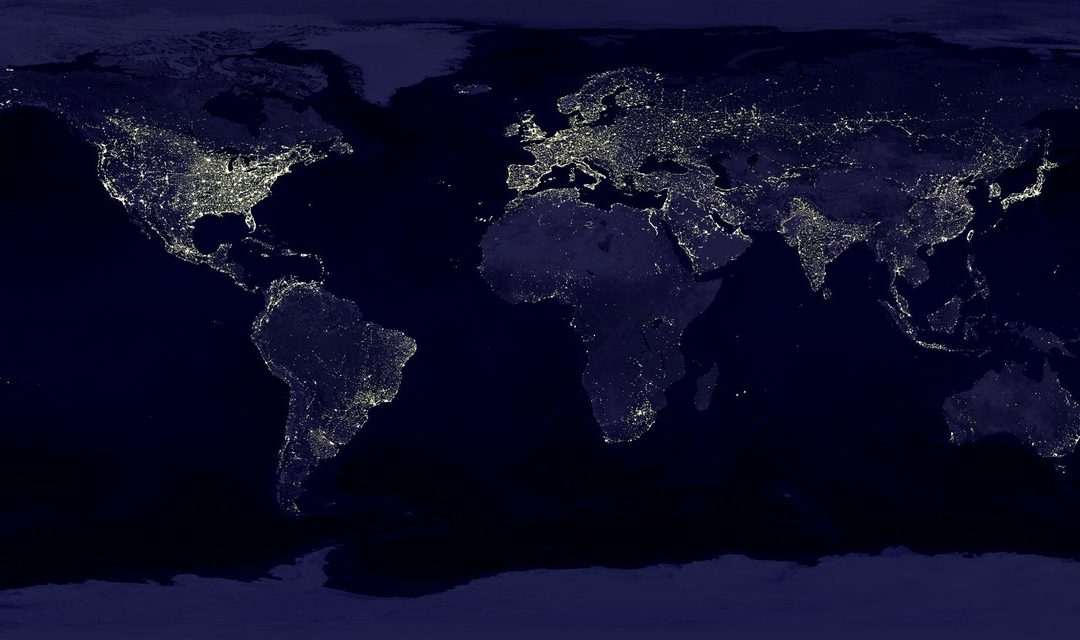In his 1968 book, The Population Bomb, Stanford University biologist Paul Ehrlich made a terrifying prediction that the human population was on a rapid path to extinction because there were simply too many of us and demand would exceed the supply of the Earth’s limited resources. Ehrlich was more than a little extreme and hyperbolic in his predictions that by the 1970s, hundreds of millions of the world’s population would starve to death, including 65 million Americans. He also predicted the over-crowded India was doomed for extinction and that England would be wiped from existence by 2000. In 1970, he warned that “sometime in the next 15 years, the end would come,” meaning the earth would no longer be able to sustain human life.
Obviously, Ehrlich’s predictions have not come true. In 1980, University of Maryland Business professor Julian Simon bet Ehrlich $1,000 that over a decade, the cost of non-government-controlled raw materials would not rise. Ehrlich took the bet, chose the raw materials … and lost. Nevertheless, Simon might have lost had a different decade been chosen to evaluate specific commodities, and Simon has been also proved wrong about many other environmental issues. Perhaps the general problem was best characterized years earlier in a quip by the Nobel Prize winning physicist Niels Bohr, who said “Prediction is very difficult, especially about the future”.
The world’s population has continued to grow, from 2.5 billion in 1950 to over 7 billion today, is projected to reach 9.6 million by 2050, and we have not experienced any dire consequences of the scale Ehrlich predicted. However, Ehrlich has stood his ground with a firm belief that the apocalypse will occur in a not-so-distant future. He continues to assert that we will someday soon outgrow our resources and plummet into an apocalypse as a result. “My language would be even more apocalyptic today,” he states.
So how concerned should we be? With population continuing to grow, and disaster movies such as The Day After Tomorrow and 2012, and shows like The Handmaid’s Tale and The 100 set in dystopian futures, a bleak future may just begin to seem to the general public as not so unfathomable.
Humanity is much hungrier for resources than it has ever been before. According to an article in National Geographic, “…,how many of us there are, how many children we have, how long we live, and where and how we live affect virtually every aspect of the planet upon which we rely to survive: the land, oceans, fisheries, forests, wildlife, grasslands, rivers and lakes, groundwater, air quality, atmosphere, weather, and climate.” Perhaps the most surprising example to me came just a few days ago in an article by David Owen in the May 29th issue of The New Yorker, titled “The end of Sand”. I had not realized the extent to which sand is a critical resource, or how problematic its developing scarcity is.
While there are those who still do not acknowledge that limited resources may become a legitimate problem, many people in the science community, are attuned to what they see as a precarious link between population and the environment. In her 2011 essay, “The Anthropocene- The Age of Man,” Pulitzer Prize-winning author, Elizabeth Kolbert, explores the sharp rise in limited natural resources. Will Steffen, a climatology expert, refers to this era of increased human activity that we are living in as “The Great Acceleration.” There are clearly a number of environmental issues that devolve from population growth impacts, of which the most important may be the affordable availability of clean, safe water.
Currently, it is estimated that some 663 million people, about 1/10th of the global population, live without access to clean water, most of those in impoverished areas. This highlights not only issues of population and resource limitations, but touches on other issues of social concern, such as the uneven distribution of financial resources both worldwide and within individual countries.
Were I, however, asked to speculate (since I share Bohr’s view of prediction) on what the greatest emerging environmental threat might be, given the increasing density of population, the ready availability of intercontinental travel, the encroachment of people into tropical jungle, and the disconnect between public health investment and emerging disease, my overwhelming apprehension would be the threat of global pandemic, an issue that hadn’t arisen as a major societal concern when Ehrlich, Simon, and many others were exploring apocalyptic scenarios.
All need not be speculation, however; the one prediction I can make with near certainty is that nature will always continue to surprise us.

